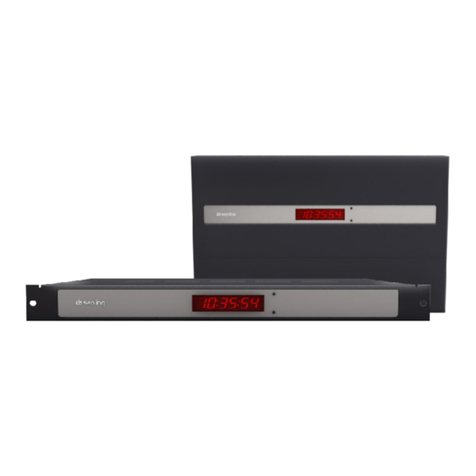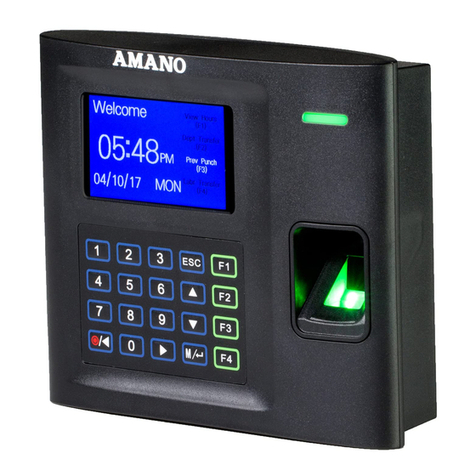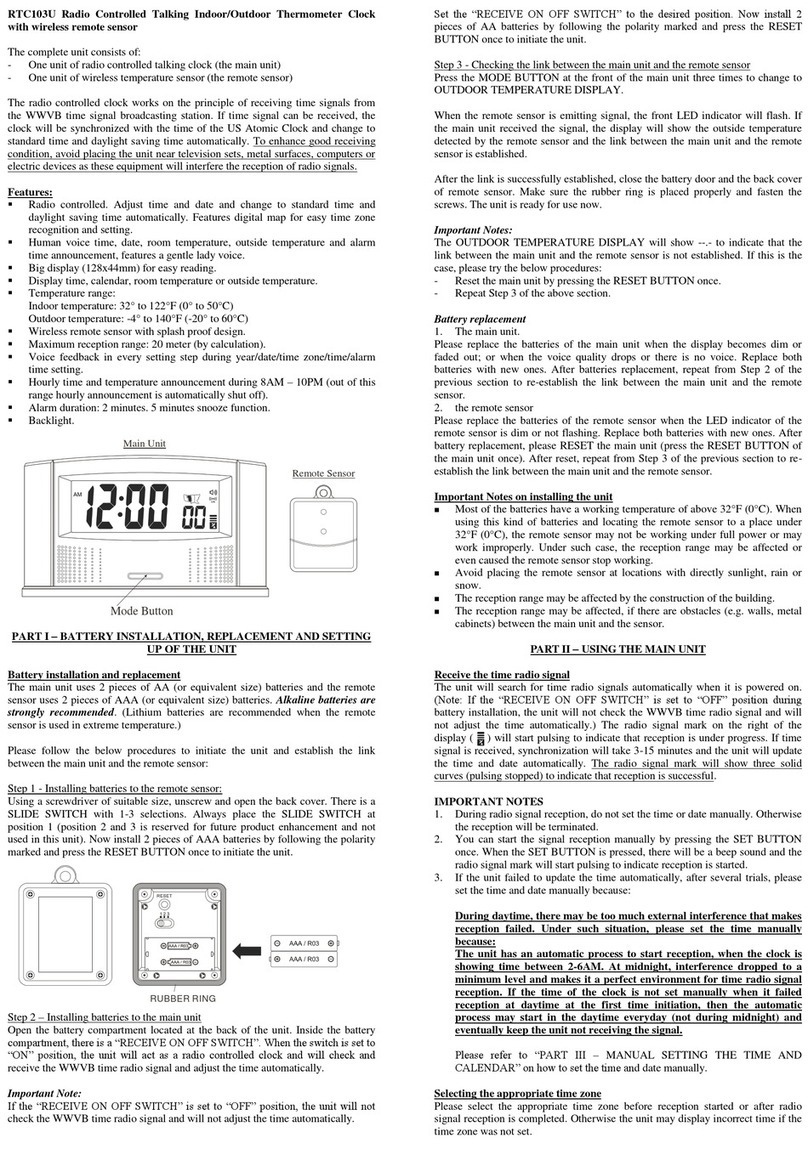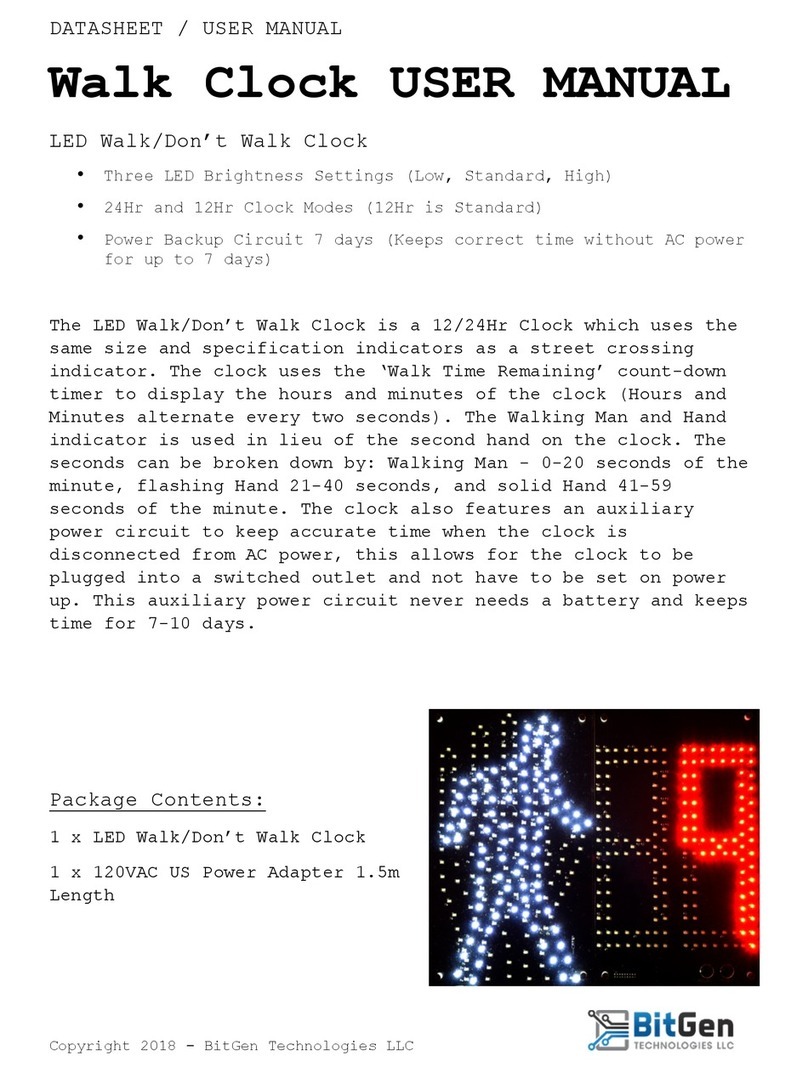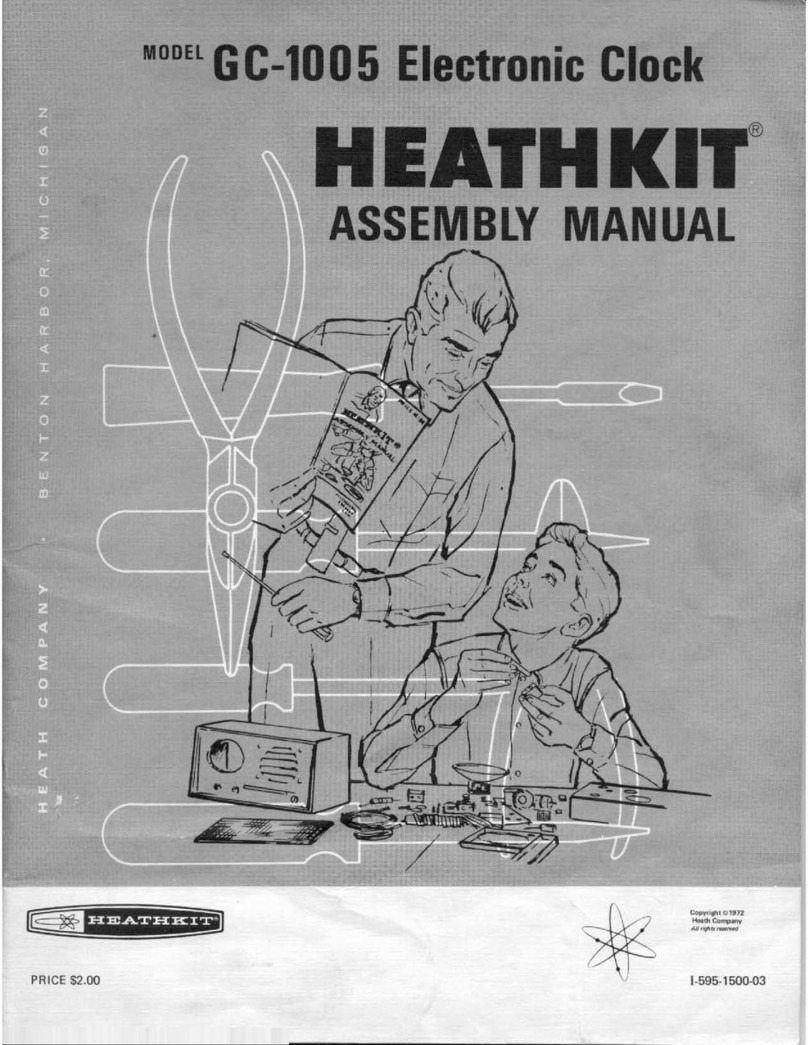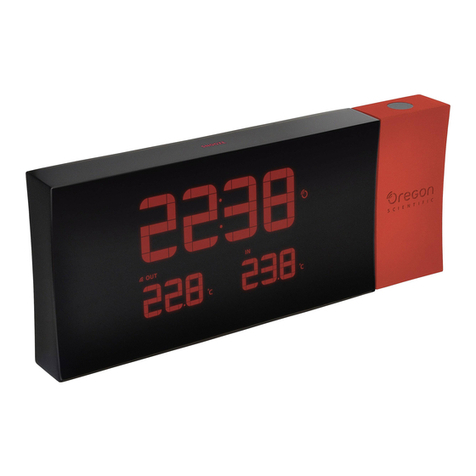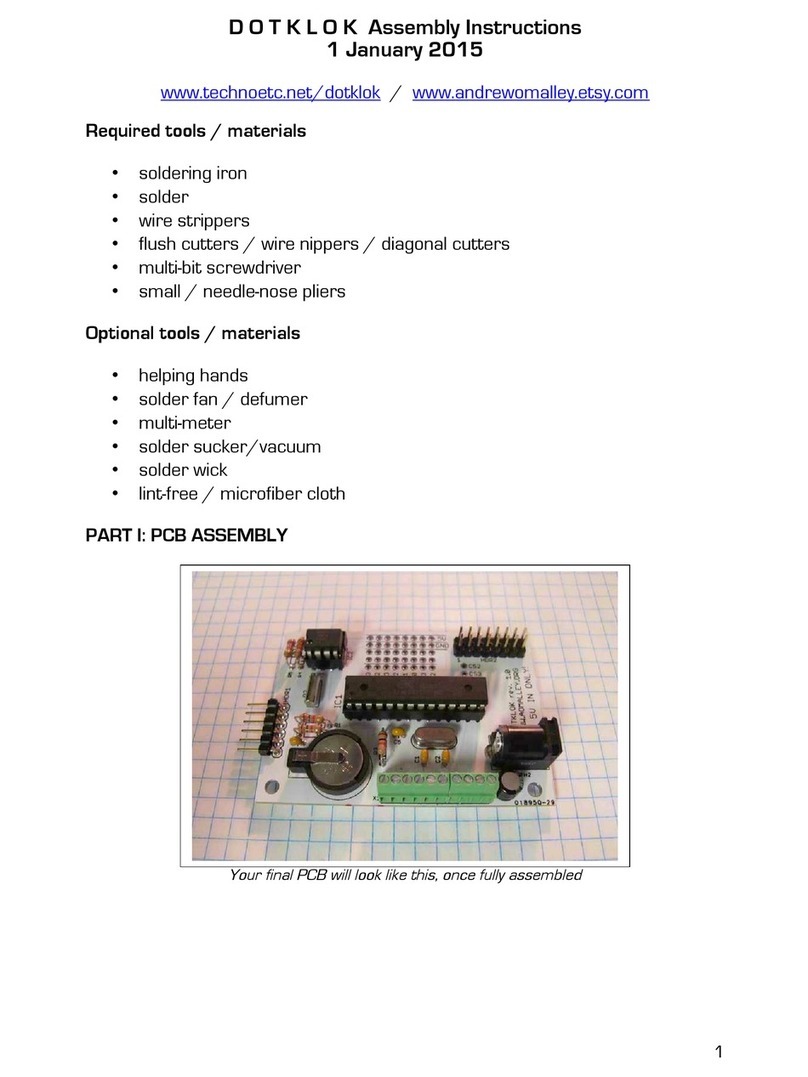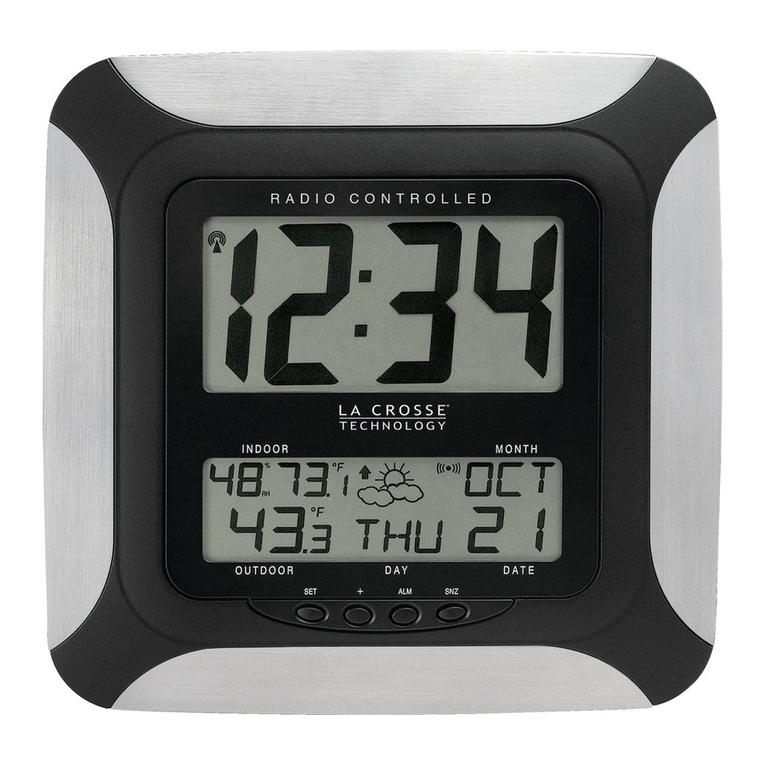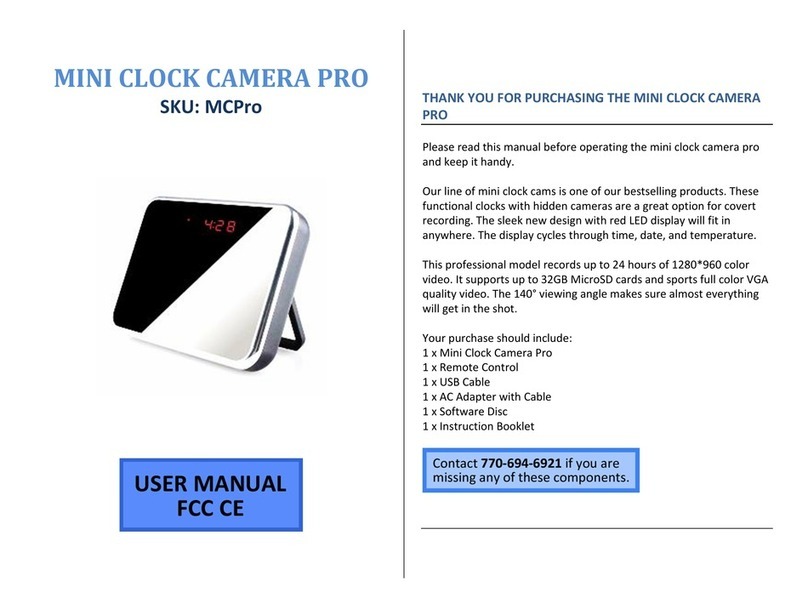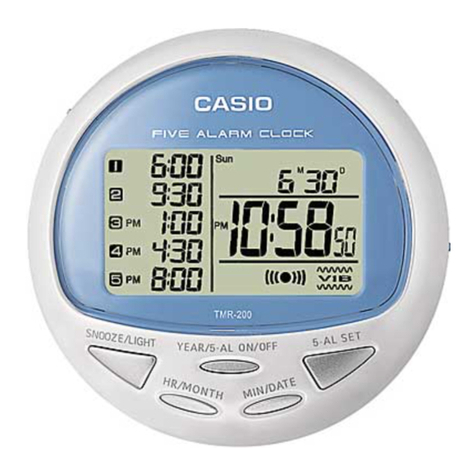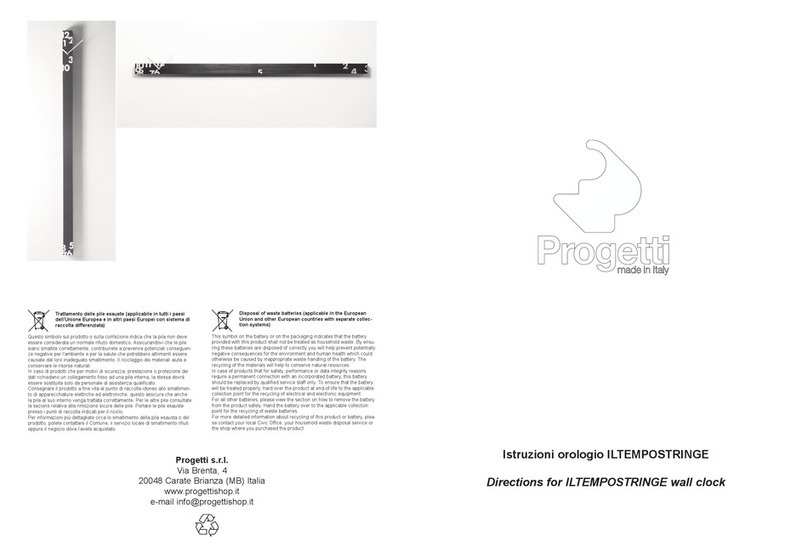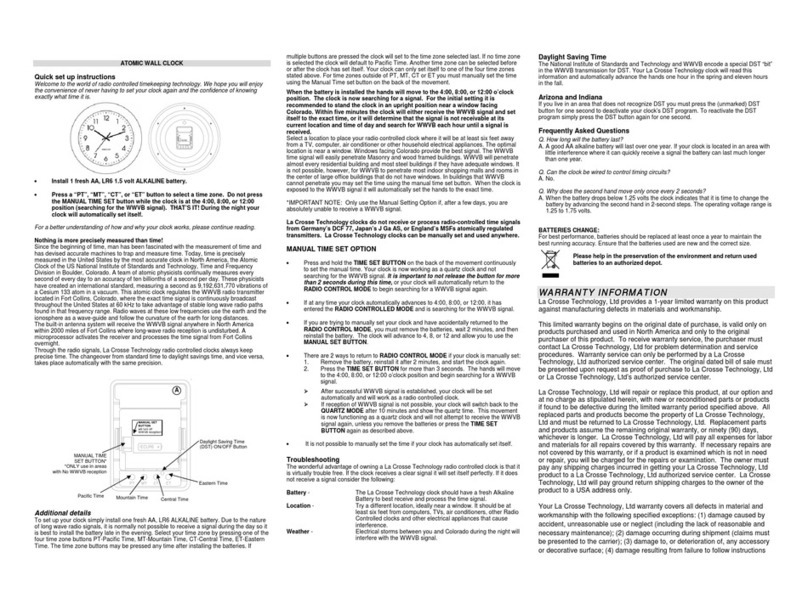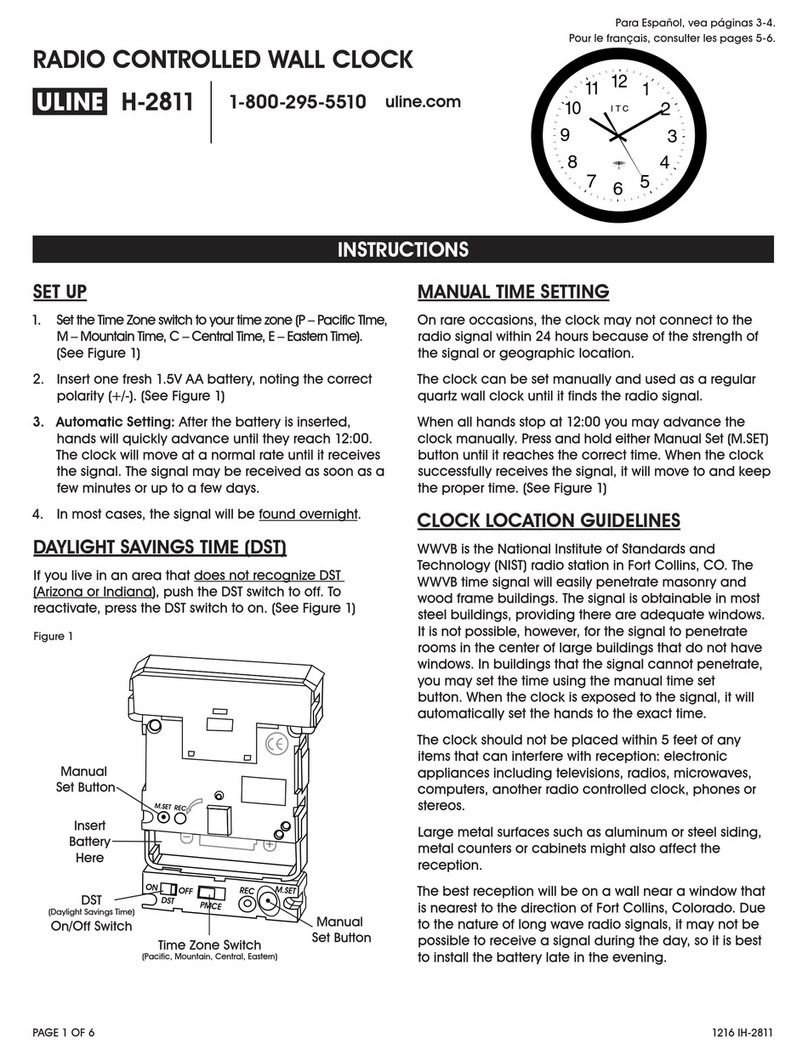
4
Instructions for Use
Clock with Wireless Weather Station - RCC
182709
The Instructions is a part of the product and shall be kept for future reference. It contains important
information on the device setting and operation.
1. PACKAGING CONTENT
Clock with wireless weather station
Single wireless sensor
Instructions for Use
2. FUNCTIONS
Clock
Outdoor and indoor temperature (°C or °F)
RCC – radio controlled clock DCF-77
3. STARTING THE DEVICE
Note: To avoid operating problems pay attention to polarity of alkaline batteries at inserting them (wrong polarity of
batteries may result in a permanent damage to the device).
There are two battery pockets at the back of the base station:
analogue clock pocket (upper pocket for 1 AA battery)
weather station pocket (lower pocket for 2 AA batteries)
Starting the weather station
Place the wireless sensor nearby the base station.
Open the battery cover.
Open the battery cover on the base station.
Place two AAA (LR03) batteries in the wireless sensor.
The wireless sensor is factory set to channel one (to change the channel set the switch to 2 or 3).
Press °C/°F to change the temperature display unit .
Put two AA batteries in the weather station battery pocket. The station will start synchronisation with the
wireless sensor.
Close the battery cover.
To accelerate sending the signal from the external sensor to the base station, press TX button on the sensor.
Close the battery cover on the wireless sensor.
Starting the clock
Put one AA batteries in the clock battery pocket.
Any time batteries are replaced in the outdoor sensor, a random protection code is sent to the station. Both
devices should synchronise automatically. However, it is recommended to restart the weather station by removing
the batteries for a short while, at replacing the batteries in the sensor. It will allow for restoring contact with the
sensor.
Note: Once all measured values are shown on the display (indoor and outdoor), the wireless sensor can be placed
outdoors and the station in any place. If outdoor measurements do not appear on the weather station, make sure
the sensor is within the station reach or repeat the battery installation procedure. If a key was pressed before all
readings appeared on the display, repeat the battery installation procedure. Prior to another battery installation wait
for at least 10 second to make sure that both the station and the sensor reset correctly.
4. MOUNTING
Before mounting both devices permanently it is important that the station and the sensor receive their mutual
signals in the intended locations.
1. Wireless sensor
To ensure reading of the actual outdoor temperature, avoid mounting the sensor in the place where it is
exposed to sunlight. We recommend mounting the sensor on an external, northern wall.
It shall be located in a place where it is not directly exposed to rain, snow or ice.
The sensor shall be placed at a distance not greater than 30 m. Such obstacles as walls, metal doors or large
metal objects reduce the coverage. Wireless devices such as alarm systems, wireless bells or other devices
sending radio signals may interfere with the signal sent from the sensor to the weather station.
5
5. SETTING THE TIME
The clock is radio synchronised from a transmitter in Mainflingen near Frankfurt and is based on Caesium Atomic
Clock whose deviations do not exceed one second per million years. DCF-77 signal is transmitted at the frequency
of 77.5 MHz and has the reach of 1,500 km. Station 182709 receives the signal and transforms it into legible time.
Hence the time displayed on the screen of the clock within DCF-77 signal reach is perfectly accurate.
The clock hands will start moving after placing batteries in the analogue clock pocket.
Next, the clock will start tracing DCF77 radio signal. Once the signal is received (which can take up to 2
minutes), the clock hands will automatically move to the correct position indicating the current time.
If the radio signal is not received, the clock hands will stop on 12.
Note!
Do not move the clock to a different place when it is tracing the radio signal. If the clock does not receive the signal
it will start new tracing after ca. 2 hours. In such case move the clock to another place, closer to a western window
and away from potential interference (TV sets, PCs etc.)
To renew the signal search press and hold REC or RESET for 5 seconds.
Note!
The signal shall be received within 24 hours. Under unfavourable weather conditions such as clouds, rain, snow
the time can be extended up to 5 days.
If the signal is not received within 5 days the clock can be set manually as follows:
Press and hold M.SET (until the time is set) - the hour and minute hands will start moving.
6. SELECTING THE TEMPERATURE DISPLAY UNIT (°C/°F)
Press "°C/°F" to set the required temperature unit : degrees Celsius or degrees Fahrenheit (°C/°F).
7. Signal reception channel
CHANNEL button (at the back of the base station) can be used to set the sensor the signal is received from.
Channels 1,2 or 3 can be set subsequently.
8. PRECAUTIONS:
Do not expose the device to strong vibrations and mechanical strain.
Avoid sudden and dramatic temperature changes (direct sunlight, low negative temperatures).
Clean the casing and the display with a soft and slightly wetted cloth.
Do not immerse the device in water.
Immediately remove used batteries from the device. Use only the type of batteries specified below.
This symbol placed on electrical and electronic equipment means the purchased product should
not be disposed with standard household waste. It shall be passed to a specialised outlet handling
and recycling electric and electronic waste. Appropriate disposal and recycling of equipment will
help prevent potential negative impact on the environment and human health.
9. TECHNICAL DATA
Base station:
Indoor temperature measuring range: 0°C to 50°C (32 °F to 122°F)
Outdoor temperature measuring range: -20°C to 60°C (-4°F to 140°F)
Tolerance/accuracy of temperature measurement: +/- 1.1°C (+/-2°F)
